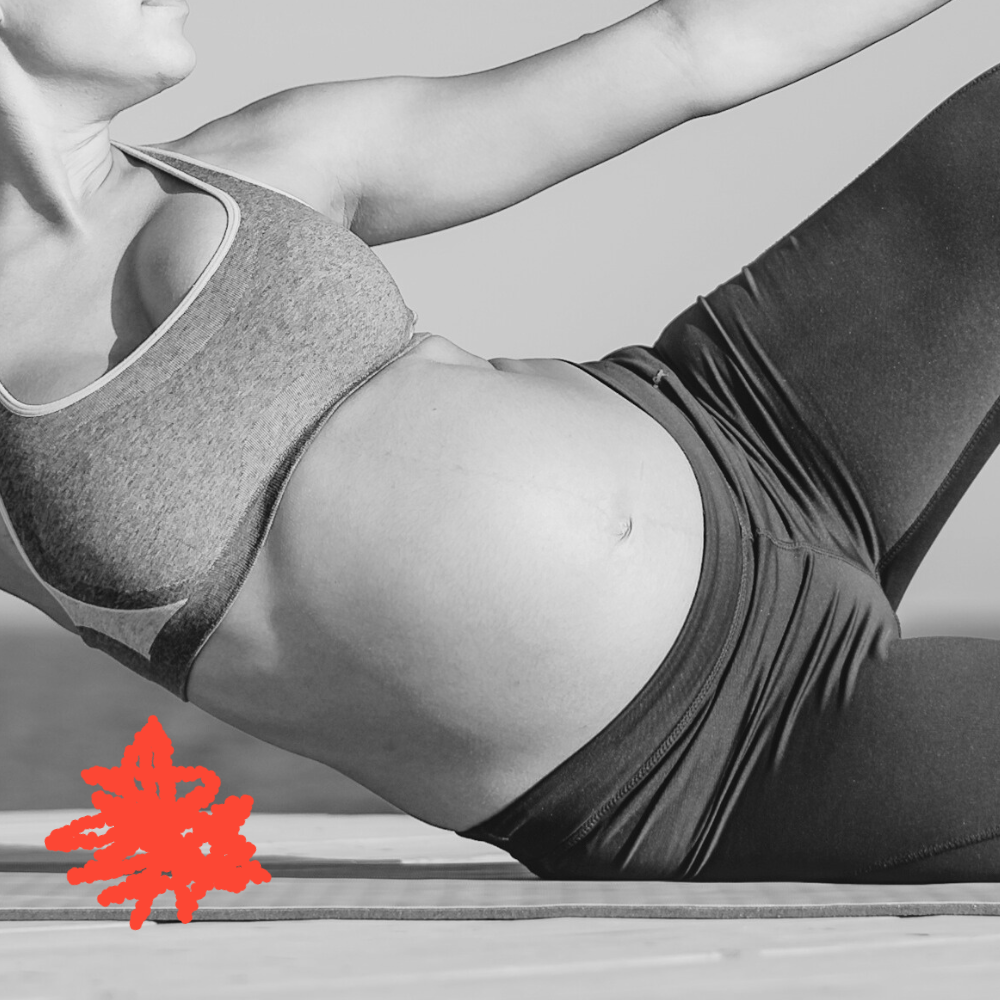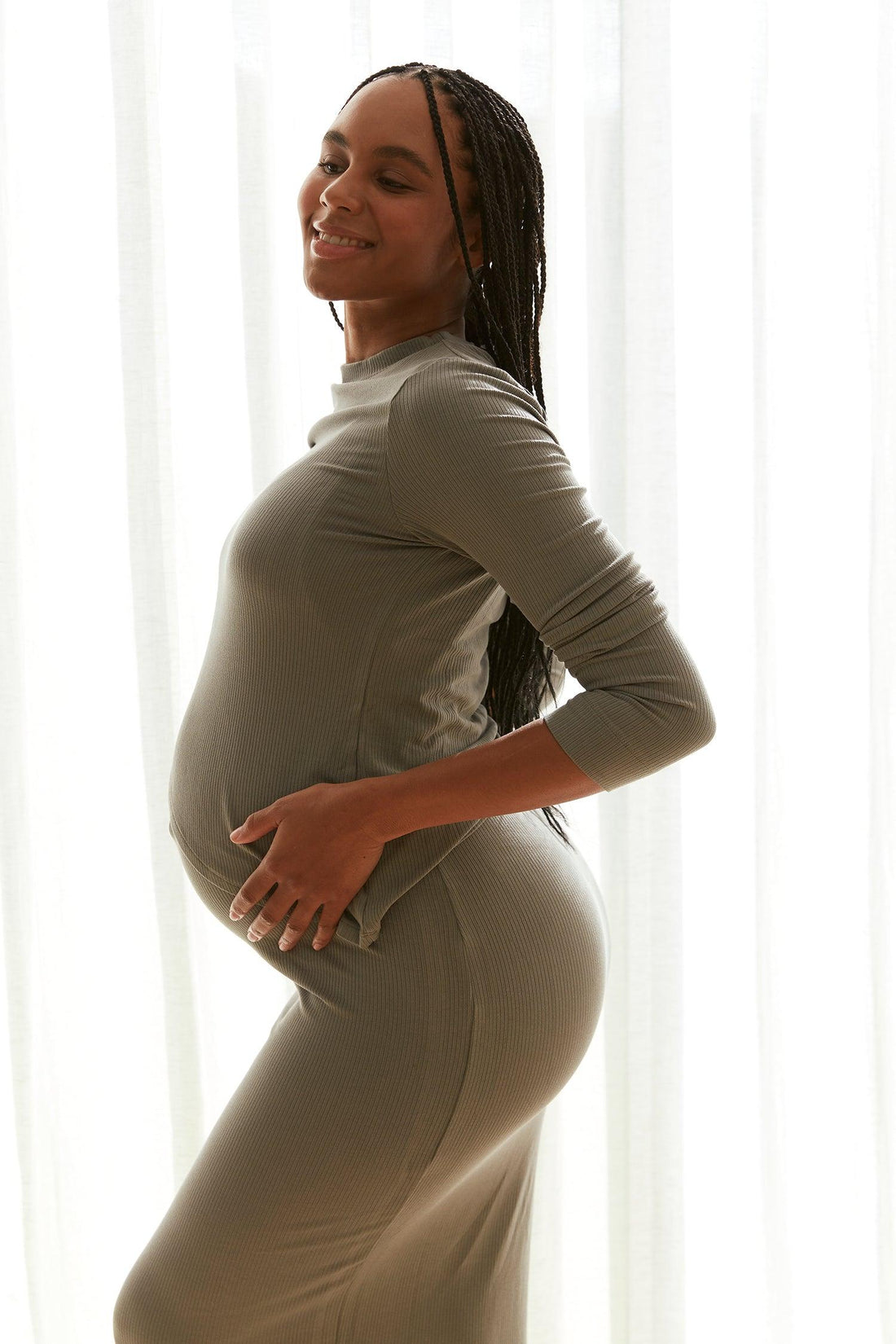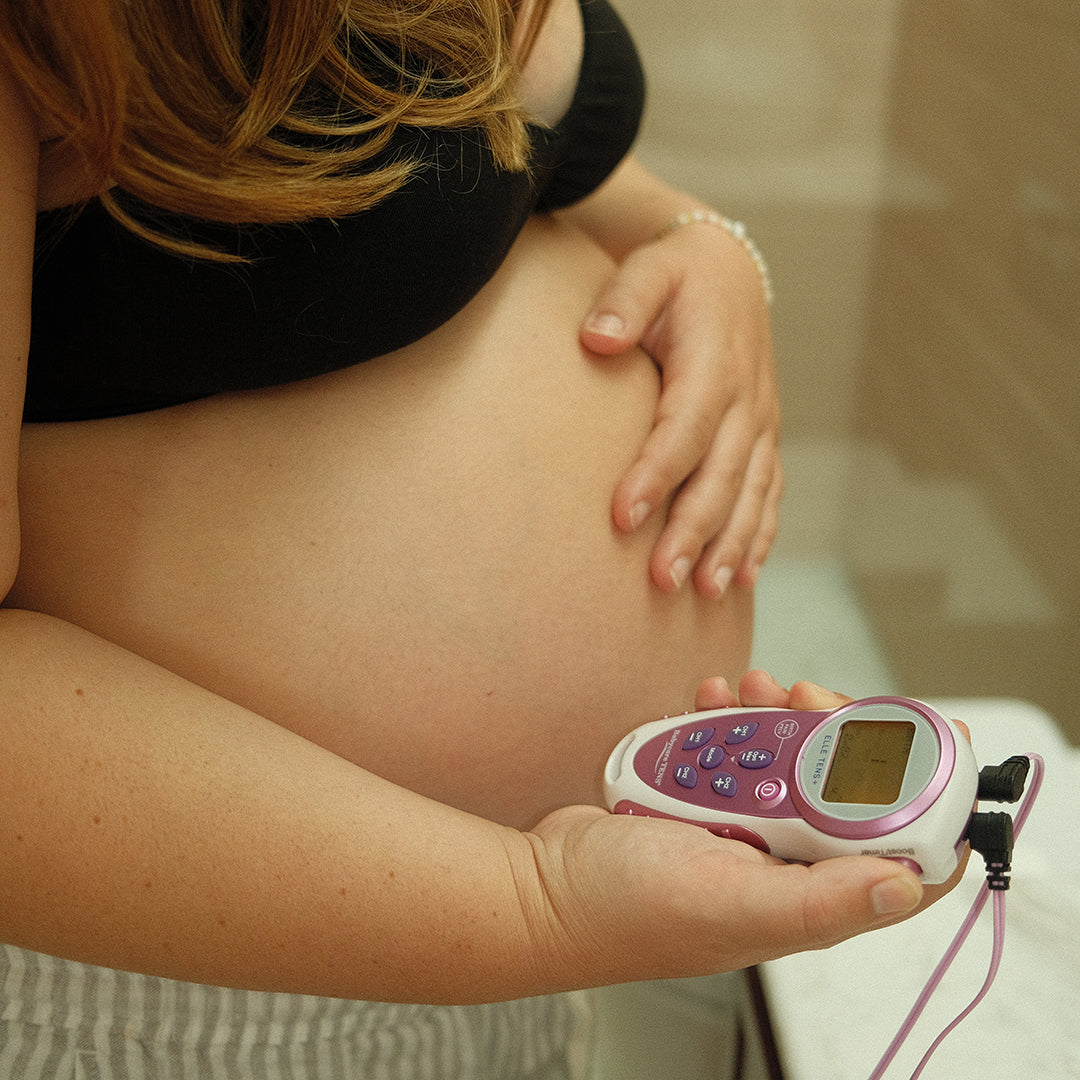Pregnancy is a great time to be active, but what does that mean?
Pregnancy is a time of rapid physical change, for you, and the baby you’re carrying. It’s a thing of beauty, for sure, but it’s also something many women feel hugely anxious about. Sure, you’re thinking about how it will feel to be a mum and what your baby will look like, but you also spend a lot of time wondering if your vagina will be OK, if you’ll ever run for the bus again or ever not resemble a beach ball. The physical aspects of pregnancy are all-consuming at times because they are great and have a huge impact on your day-to-day. One way to ease the mind-mess is to know you’re doing all the right things by your bod.
Pilates is oft recommended for pregnancy, but what does that mean? To find we asked all your questions to female fitness expert Lizzie Bland. Lizzie is an ex-dancer, qualified pre- and post-natal exercise instructor and founder of Sydney’s female-only workout haven Lean Bean Fitness. She also gives great advice and knows how to strengthen your pelvic floor (which is great because it’s what keeps your uterus and bladder intact and deserves our attention), see for yourself.
Which body parts need our love and attention during pregnancy?
“Because of the weight of the bump many women, myself included, experience lower-back pain and pain around the hips from the downward pressure. As your boobs grow, your shoulders start to pull forward meaning your upper back and neck muscles get weak and your chest muscles tighten. And for many, hip joints become problematic because the hips widening can cause pelvic girdle pain.”
What can be done to protect against these potential problems?
“Exercising regularly can definitely help. Remember, aches and pains often get worse when you do more sitting than moving. Pre-natal Pilates and barre classes focus heavily on strengthening your posterior muscles, like your glutes and lats, and lengthening the front of your body, like your quads and pecs, to counteract the uneven weight distribution of pregnancy. They also help strengthen the deep core muscles that help prevent pelvic prolapse (when one of your pelvic organs e.g. uterus, vagina, rectum falls out of place) and assist in a better postnatal recovery.”
“If you experience back or hip pain, swimming is a great way to relieve some of the pressure, particularly in the last trimester. Walking is also great for keeping you moving, and for keeping you calm and as stress-free as possible. Your hormones go a bit haywire during pregnancy, so keeping active is just as important for your mental health as your physical”
How can we protect the all important pelvic floor?
“If you’re experiencing pelvic pain, pelvic floor exercises will help to keep the internal muscles strong and stabilise the joints. Even if you’re not, daily exercises can do a lot. They minimise the risk of prolapse, help with post-birth recovery and are especially helpful with pre- and post-birth incontinence.”
“The exercises are easy, and can be done seated. To do them, take a slow breath in, and on the breath out, draw in the pelvic muscles as if you’re stopping a wee. Hold for 5-10 seconds and then release. Repeat 10 times, up to three times a day. Every day. Ideally for the rest of your life.”
“I also recommend seeing a womens’ physio. They can make sure you’re getting it right and engaging the correct muscles. I saw Anna Scammell at The Whole Mother, who was great and also does online consultations if you live outside Sydney.”
Give us the facts on abdominal separation and getting them back together. Is it possible?
“Ab separation, or the medical term Diastasis Recti, is where the abdominal muscles separate due to the abdomen growing, causing a gap going down the centre of your stomach. It’s mostly seen in pregnancy, but can also be caused by obesity. Toe taps and heel slides while lying on your back are good exercises to start with post birth, as well as pelvic tilts and bridges. Heal the abdomen gently.”
What kind and level of Pilates can you do during pregnancy?
“You can attend most Pilates-style classes if you did so before you were pregnant, but you must make sure you speak with your instructor prior. After the first trimester, Pilates reformer isn’t ideal because your balance will be off and you’re quite restricted in the exercises you can do. In the first and most of the second trimester (around 20 weeks), lying on your back doing hip lifts and single leg toe taps are great for hip stability, but after that focus on positions where you’re on all-fours or lying on your side.
How long after birth can you return to Pilates?
“If you are given the all clear at your six-week health check you are eligible to start light exercise, but many women will feel they need longer. And it means going very slowly and carefully for several weeks.”
What are your thoughts on “bouncing back”?
“Everyones’ recovery is so different. There's no set period of time after which you’ll feel ‘back to normal’. I won’t lie, it is a hard and long process to get back to your previous strength. You have to be so careful in the beginning. It's boring, but you really have to start slow and steady. Once you get to 10 weeks or more, you might notice that with every week of regular Pilates classes, you'll start to regain a bit more strength every week. But again it is slow, and all comes down to consistency.”
Your instructor might be one of the first people you have to tell about your pregnancy! Is there an etiquette for it?
“Absolutely. Even if you’re only six-weeks pregnant, have a quiet chat with your instructor prior to class and let them know. You might feel light-headed or generally unwell early on, so they will remind you to take it easy and can give you modifications where necessary. Post-baby it’s also really great to let your instructor know where you’re at before every class. Arrive early so they have time to show you some alternative exercises so you won’t be left out when everyone’s doing burpees and bicycle abs."
















